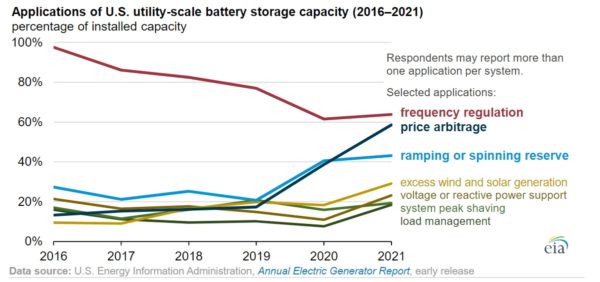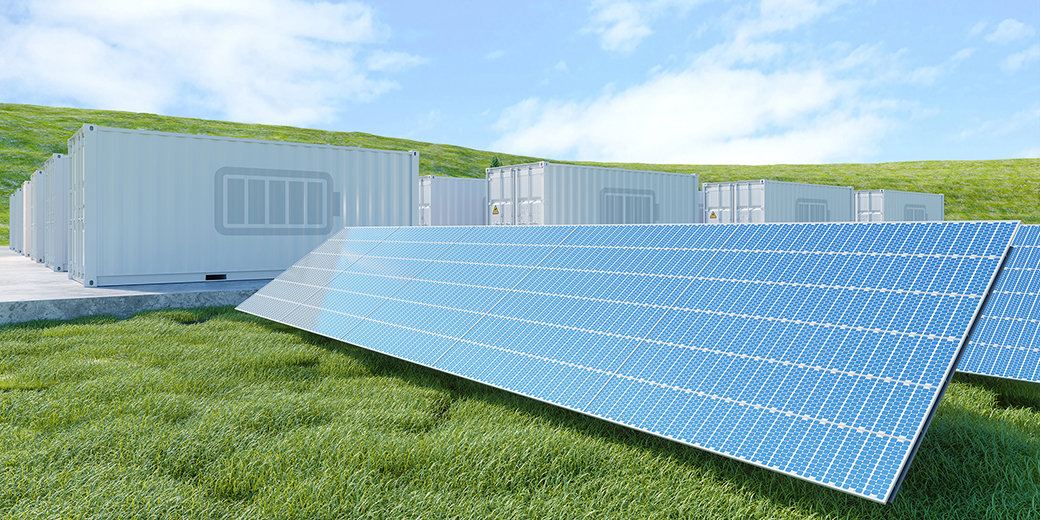The capacity of utility-scale battery storage tripled in the United States between 2020 and 2021, growing from 1.4 GW to 4.6 GW, according to the early release Annual Electric Generator Report by the US Energy Information Administration.
In a survey that asked respondents how they use batteries, the most common use is frequency regulation, which helps maintain the grid frequency of 60 cycles per second. This enhances grid reliability because deviations from that frequency could lead to power surges or other types of grid instability.
The survey found that the biggest change in use is that more systems are being used to store electricity when prices are low, and discharge when prices are high, known as price arbitrage.

During 2021, 59% of the 4.6 GW of utility-scale US battery capacity was used for price arbitrage, up from 17% in 2019. In certain markets, price arbitrage is more common than in others. For example, more than 80% of the battery capacity added in 2021 in the California Independent System Operator (CAISO) service territory was used for price arbitrage.
Batteries are also being used to counter excess wind and solar generation, as they absorb excess solar or wind generation when demand is low and then discharge it later when demand is high. More than 93% of the battery capacity that came online in 2021 was co-located with solar power plants.
This content is protected by copyright and may not be reused. If you want to cooperate with us and would like to reuse some of our content, please contact: editors@pv-magazine.com.









By submitting this form you agree to pv magazine using your data for the purposes of publishing your comment.
Your personal data will only be disclosed or otherwise transmitted to third parties for the purposes of spam filtering or if this is necessary for technical maintenance of the website. Any other transfer to third parties will not take place unless this is justified on the basis of applicable data protection regulations or if pv magazine is legally obliged to do so.
You may revoke this consent at any time with effect for the future, in which case your personal data will be deleted immediately. Otherwise, your data will be deleted if pv magazine has processed your request or the purpose of data storage is fulfilled.
Further information on data privacy can be found in our Data Protection Policy.